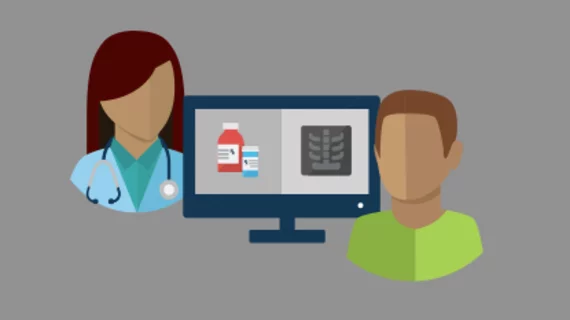Clinical decision support benefits radiology trainees, significantly improves appropriateness scores
University of Virginia researchers found that radiology trainees benefit the most from a commercially available clinical decision support (CDS) program being implemented into an electronic health record, which overall improves the appropriateness scores of ordered imaging studies significantly.
The study was published May 25 in the Journal of the American College of Radiology.
Designed around the American College of Radiology (ACR) Appropriateness Criteria, CDS helps health care providers choose appropriate imaging studies at the time of order entry, wrote led author Timothy Huber, MD, and colleagues.
As the transition from volume-driven care to more value-driven care in medicine continues, imaging providers - especially radiologists - are using CDS to improve imaging appropriateness and overall reduce unnecessary imaging and health care costs.
"The shift from volume- to value-based payment models has prompted physicians to examine which aspects of the care they provide are warranted and which aspects are of low value," Huber et al. wrote. "Radiology, as a referral specialty, can contribute to this effort by providing guidance to referring providers on the most appropriate imaging test, if any, given the clinical presentation.
According to study methods, the ACR Select CDS database was integrated into the researchers' electronic health record in 2014, but purposely did not display appropriateness scores for imaging studies for six months. Afterwards, examination appropriateness feedback was "turned on" at order entry for adult patients in the emergency and inpatient settings for the next two years, the researchers wrote.
Finally, appropriateness scores of the imaging test before and after displaying feedback at order entry were compared and evaluated according to imaging modality (i.e. MRI, CT, nuclear medicine and PET, and ultrasound) and attending versus trainee status.
Study results included the following:
- The commercially available CDS generated scores for 34 percent and 20.4 percent of pre- and postintervention studies.
- The improvement in appropriateness scores was noted for MRI, CT and ultrasound studies.
- After feedback, the relative frequency of low utility studies decreased to 5.4 percent from 11 percent, and the relative frequency of indicated studies increased to 82 percent from 64.5 percent - this was most pronounced in trainees for whom the percentage of low utility studies decreased from 10.8 percent to 4.8 percent and the percentage of indicated studies increased from 65.6 percent to 83.7 percent.
In accordance with their findings, the researchers noted that further research is needed to evaluate the impact of commercially available CDS in a private practice setting.
"Variation in ordering habits and scores for departments and subspecialties might reveal areas in need of remediation, either through training at a local level or through revision of the appropriateness criteria," the researchers wrote. "Future studies of the impact of commercially available decision support could include assessments of changed or canceled orders based on electronic feedback at order entry, as well as assessments for potential decreased utilization or decreased growth rate of advanced imaging studies."

